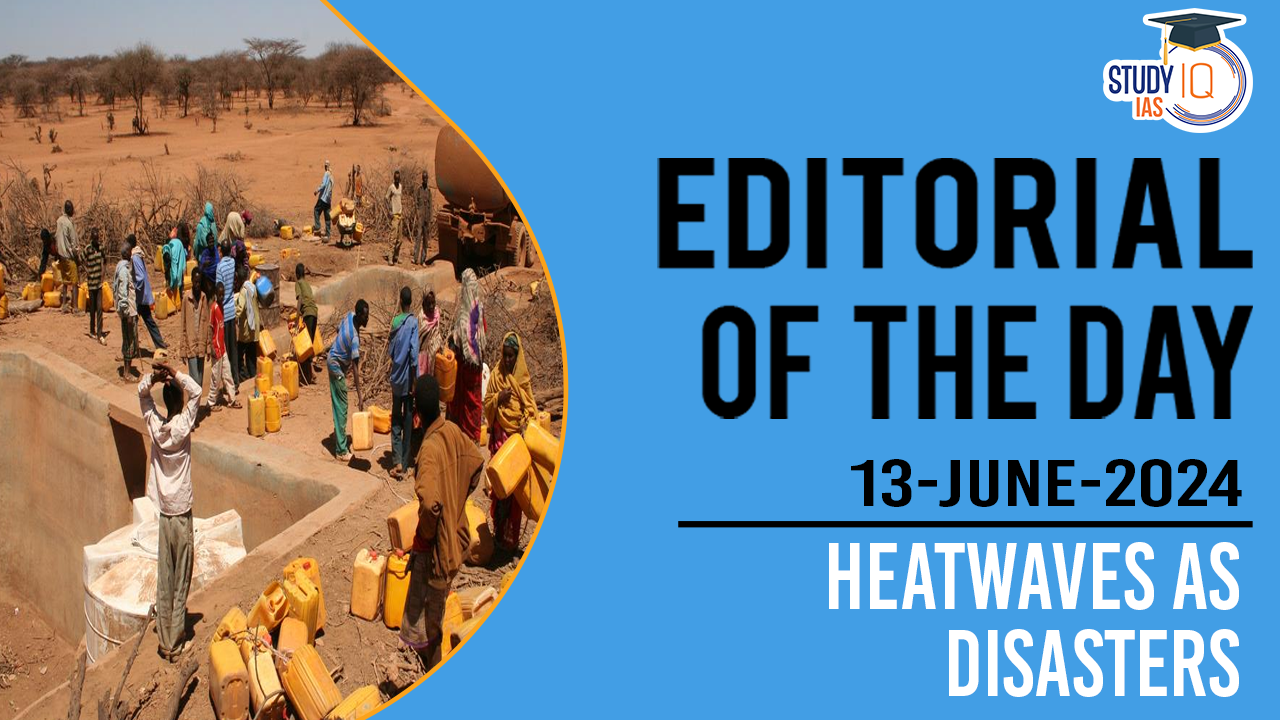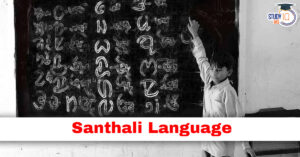Table of Contents
Context: The current spell of extreme heat in various parts of the country has reignited discussions about including heatwaves as a notified disaster under the Disaster Management (DM) Act, 2005.
Notified Disasters and the DM Act
- The Disaster Management (DM) Act was enacted following the 1999 Odisha super-cyclone and the 2004 tsunami.
- Definition: The DM Act defines a disaster as a “catastrophe, mishap, calamity or grave occurrence” arising from “natural or man-made causes” that results in significant loss of life, destruction of property, or environmental damage, and is beyond the coping capacity of the community.
- Current List of Notified Disasters: There are 12 categories of notified disasters: cyclones, drought, earthquakes, fires, floods, tsunamis, hailstorms, landslides, avalanches, cloudbursts, pest attacks, and frost and cold waves.
Legal Framework
- When such an event occurs, the DM Act provisions can be invoked.
- States can draw funds from the National Disaster Response Fund (NDRF) at the national level and the State Disaster Response Fund (SDRF) at the state level.
- States first utilise the SDRF and, if insufficient, seek funds from the NDRF.
- In FY 2023-24, only two states drew money from the NDRF.
Funding Sources
- NDRF: Entirely funded by the central government.
- SDRF: States contribute 25% (10% for special category states); the rest is funded by the central government.
- Funds can only be used for response and management of notified disasters.
| Related Information |
| India ranks seventh globally among regions most severely affected by extreme weather events. |
Need as a Notified Disaster
- Exclusion from the DM Act: Historically, heatwaves were not included when the DM Act was enacted in 2005 because they were common summer occurrences and were not considered unusual weather events.
- Increasing Severity and Frequency: Over the last 15 years, the severity and frequency of heat waves have increased.
- Economic activity has exposed more people to the risk of heat strokes due to outdoor work.
- Vulnerability: 23 states are vulnerable to heatwaves.
- These states and several cities have developed heat action plans (HAPs) involving:
- Creation of shaded spaces.
- Ensuring the availability of cool water in public places.
- Distribution of oral rehydration solutions.
- Reorganising schedules for schools, colleges, and offices.
- These states and several cities have developed heat action plans (HAPs) involving:
- Financial Limitations: State governments cannot use SDRF funds for HAPs, leading to demands for including heat waves as a notified disaster.
- Potential Benefits of Inclusion: Improved management and reporting of heat-related illnesses and deaths.
- Increased alertness and preparedness among authorities to minimise the impacts of heatwaves.
Central Government’s Reluctance
- Finance Commission’s Stance: States have requested the inclusion of heatwaves before the last three Finance Commissions.
- The 15th Finance Commission noted the existing list sufficiently covers state needs and did not endorse including heatwaves.
- However, it allowed states to use up to 10% of SDRF funds for “local disasters” like heatwaves, which states could notify independently.
- Haryana, Uttar Pradesh, Odisha, and Kerala have used this provision to classify heatwaves as local disasters.
- Practical Difficulties: The main reluctance stems from potential financial implications:
- The government must provide Rs 4 lakh for every life lost due to a notified disaster, including heatwaves.
- Heatwaves cause a significant number of deaths, which may be underreported. Recent reports indicate over 500 heat-related deaths.
- Difficulty in attributing deaths directly to heatwaves complicates compensation claims.
- Financial Allocation: The 15th Finance Commission recommended Rs 1,60,153 crore for SDRFs for 2021-26.
- Uttar Pradesh received about Rs 11,400 crore.
- Maharashtra received the maximum share, about Rs 19,000 crore.
- There are concerns this money might be insufficient if heatwaves and other high-casualty disasters like lightning are added to the list.


 100 Years of CPI: Origins, Ideology, Fre...
100 Years of CPI: Origins, Ideology, Fre...
 Santhali Language: History, Script, Cons...
Santhali Language: History, Script, Cons...
 Why India Needs Its Own Economic Model?
Why India Needs Its Own Economic Model?

























